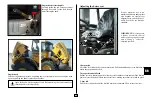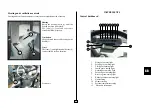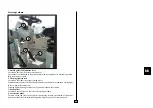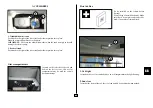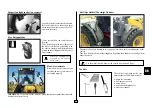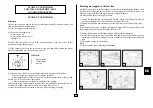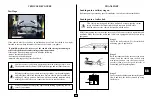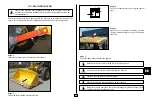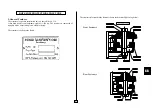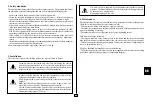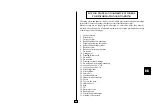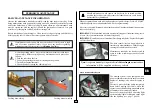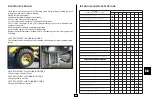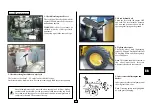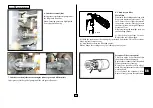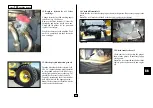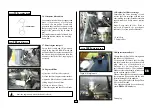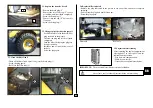
23
GB
Machine use: basic rules
Ensure that all machine parts and equipment work properly during machine use.
Remember: the majority of inconveniences and breakdowns that occur during machine
use are caused by loosening of machine components and leaks that have not been dealt
with quickly enough.
Since running in produces a general settling of all mechanical components and hydraulic
connections, highly rigorous machine checks
ARE ESSENTIAL
.
Bear in mind the following regulations:
- During initial machine manoeuvres do not rev the engine too high (1,200 - 1,500
r.p.m.) so that transmission oil (converter, inverter, gears, pinion set, governors) and
hydraulic oil reach operating temperature gradually.
- Move all the levers gently to avoid damaging loads and knocks.
- Do not insist in using the hydraulic cylinders if they are unable to oppose the necessary
resistance: this, in fact, opens the main hydraulic valve and could lead to dangerous oil
overheating.
- Periodically check the warning lights and panels: If a warning light comes on or if an
indicator exceeds the allowed limits stop the vehicle immediately and switch off the
diesel engine to carry out the necessary checks. If the cause is not found do not restart
work since highly expensive components could be damaged. Wait until authorised service
personnel have carried out repairs.
- Spinning the wheels not only transmits just a fraction of engine power, but rapidly
wears down tire tread.
- The working load bucket must be in the right position. An arm indicator, which helps
position the bucket horizontally on the ground, has been installed for this purpose.
-
To ensure maximum bucket efficiency, just follow the above rules: forcing the
machine beyond its own performance levels is unnecessary and ineffectual.
Use the vehicle with the bucket down as much as possible. This position
improves machine stability and gives better visibility. If the vehicle must
be moved with a full bucket over uneven or slippery ground, drive slowly.
If this basic safety rule is ignored you could lose control of the vehicle and
cause it to roll.
When towing the vehicle, the hydraulic motor
works as a pump and via the high pressure
system valve delivers sufficient oil to protect
the system.
Bear in mind the following during towing:
1) maintain adequate towing speed (e.g. 1 km/h);
2) limit towing to short distances (1-2 km);
3) avoid the overheating of the hydraulic motor
(at approx.80°)
4) return the valve part to its original position
after towing.
Always switch on the emergency lights and the rotating light during towing.
TOWING
Towing pin
Towing is a delicate operation performed at the operator’s risk. The
Manufacturer declines all liability for damage and accident that may occur.
The vehicle must be towed very slowly over flat and horizontal terrain for
short distances only and only when absolutely necessary.
Towing must be absolutely performed with the use of the tow bar.
Towing procedure
In case of the repair or malfunction of the vehicle, disable the hydrostatic pump’s high
pressure valve (see photo) by rotating the part of the valve indicated in the photo by
approximately one and a half turns.








